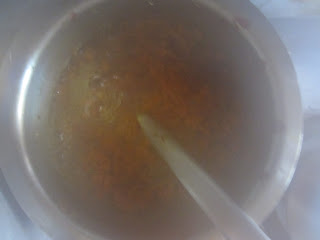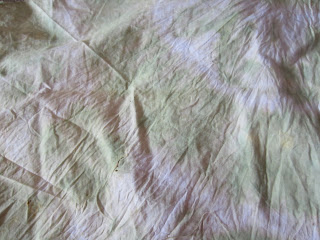Last Sunday when we visited the
leaf-plate making workshop we also took the opportunity to stop by a cloth making workshop. I was really hoping to see the process of making cloth from the begging, but it seems to do that it would involve some travelling as the cotton growing and harvesting doesn't take place around here.
Still we were able to see some of the procress.
The cotton is purchased from Navadwip. I think it looks a little bit like this, but not yet coloured. We'll have to go to Navadwip to check it out. The cotton is then dyed and hung to dry like this.
The cotton is then spun on this simple machine (a chorka) and turned into fine thread.
In the workshop the thread is woven into cloth on these, less simple, machines!
The entire process you see here takes place without electricity.
I guess this has something to do with making the pattern designs in the cloth.
It takes from 1.5 hours to a day to complete a sari (5 meters of cloth) depending on the amount of detail in the design.
The final product.
















































